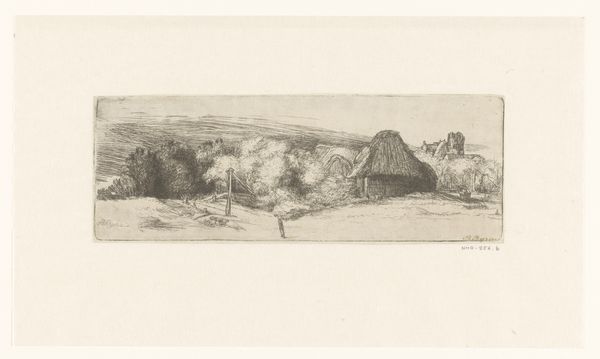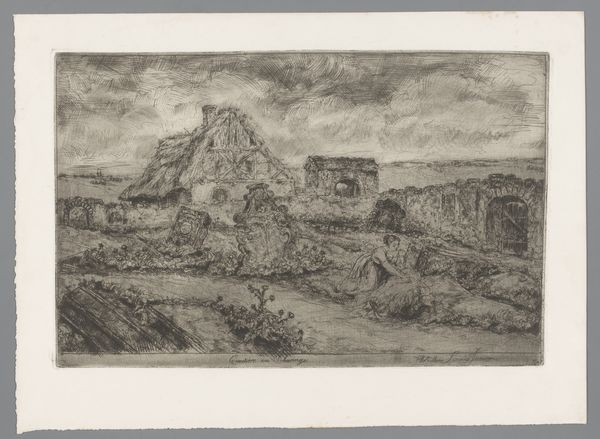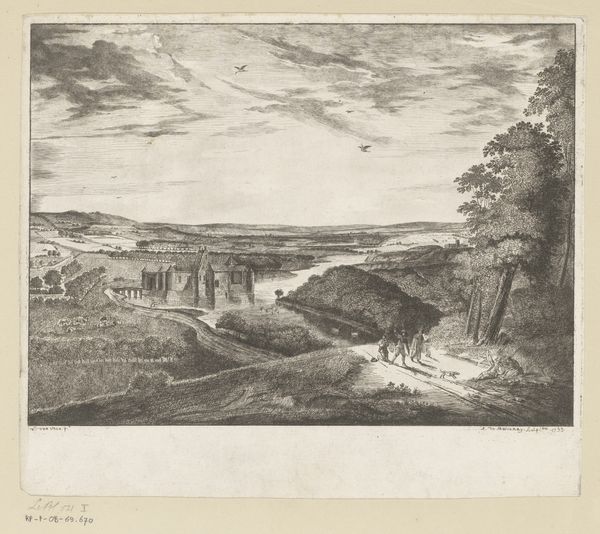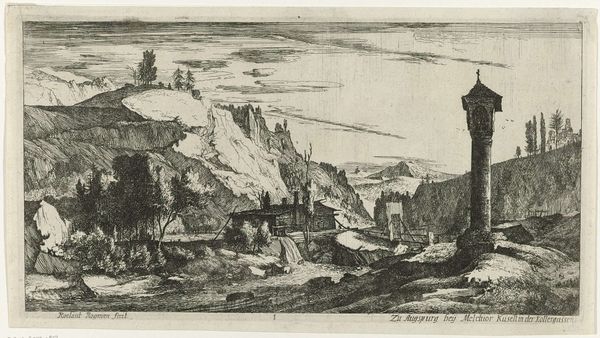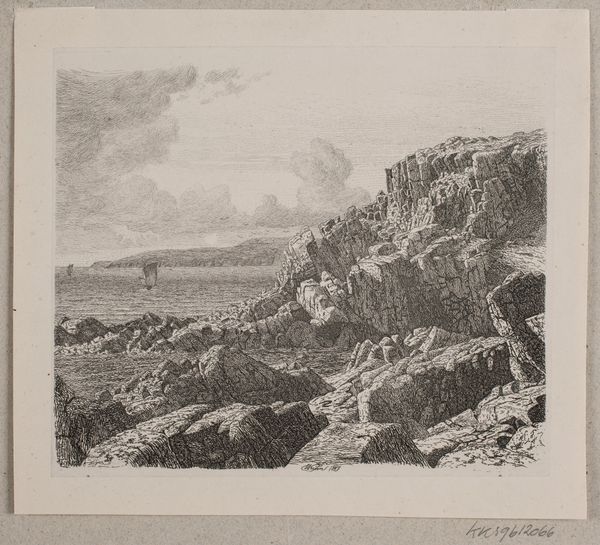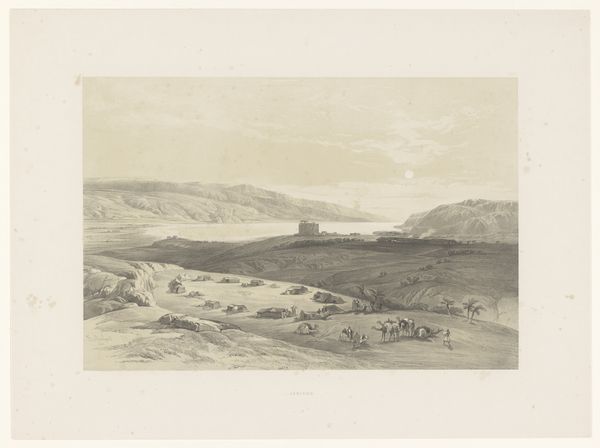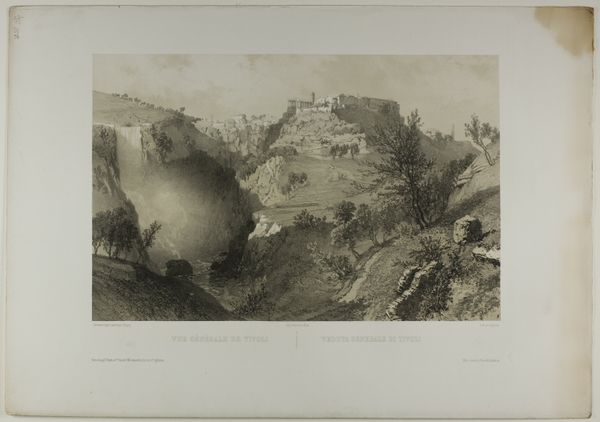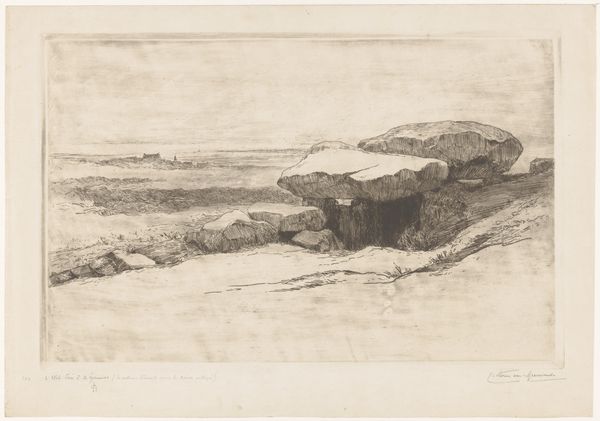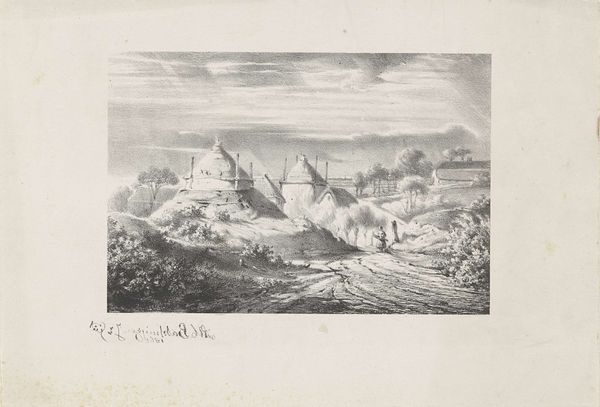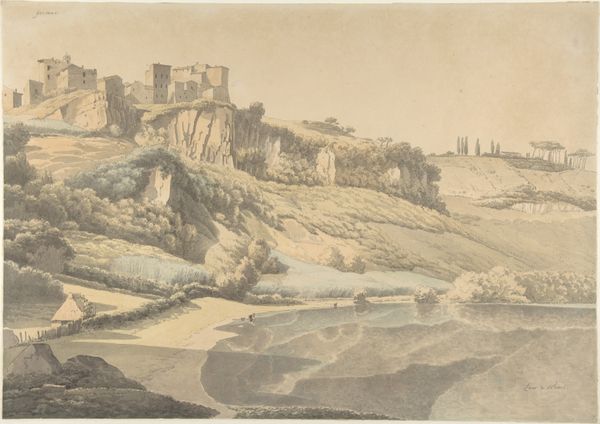
Ruins of the Chateau of Crèmieux (Isère) 1850
0:00
0:00
drawing, print, etching
#
drawing
# print
#
etching
#
landscape
#
romanticism
#
cityscape
Dimensions: Image: 3 5/8 × 6 7/8 in. (9.2 × 17.5 cm) Sheet: 12 1/4 × 17 5/8 in. (31.1 × 44.8 cm) Plate: 4 3/4 × 7 3/4 in. (12.1 × 19.7 cm)
Copyright: Public Domain
Curator: Let’s take a closer look at “Ruins of the Chateau of Crémieux (Isère),” an etching made by Charles-François Daubigny in 1850. Editor: There's a certain melancholy permeating this image; the low horizon line, the dilapidated architecture, and a foreboding sky seem to reflect themes of decline. Curator: It does evoke Romantic sensibilities, doesn't it? Consider Daubigny’s era – a time of upheaval. His choice to depict ruins goes beyond a simple landscape, it confronts the viewer with a past order and challenges conventional aesthetics. It embodies a kind of defiance against oppressive forces. Editor: I am drawn to how the ruin occupies a somewhat central location. It's raised above what appears to be the rest of the landscape, hinting at perhaps class division between those who lived in these walls and those who were on the ground. How might this comment on power dynamics, both in Daubigny’s era and perhaps our own? Curator: Absolutely, those power dynamics shaped much of the artistic and social landscape of that time. Beyond its aesthetic value, an image like this invites discussion around access, privilege, and who has the authority to represent these spaces. I would wonder what Crémieux represents symbolically—what happened there, and who profited? Editor: It's interesting to note the desolation as a recurring subject during the Romantic period, wasn’t it? Almost like the land is bearing witness. A reminder that even powerful structures are eventually humbled by the passage of time and circumstance. Curator: And whose narratives do we privilege when we document places? Do we question the prevailing colonial and class-based norms of our contemporary society? It’s images like these that keep me thinking critically. Editor: It definitely offers some compelling interpretations for its audience. Curator: I agree. This etching serves as a poignant reminder of how art engages in the world around it.
Comments
No comments
Be the first to comment and join the conversation on the ultimate creative platform.

